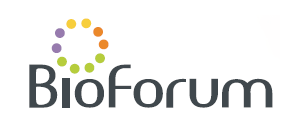Do More with Less: Where Combination of Refractive Index Measurements and Internal Reference from a Crime Scene Lead to a Stronger Determination in Multi-Fragment Comparison of Glass
Ophir Levy, Toolmarks Lab, Israel Police, Jerusalem, Israel
Yigal Zidon, Toolmarks Lab, Israel Police, Jerusalem, Israel
Forensic services around the world practice forensic comparison examinations of glass. In our experience at the forensic service of the Israel Police, probably the most common potential outcome of this type of examination is linking a suspect to a crime scene. The examination typically includes a series of instrumental analytical methods and scientific approaches. Of the applied analytical methods, probably the most long-standing and indicative is the Glass Refractive Index Measurement (GRIM) method. In addition to GRIM, an elemental-composition analysis is often applied to further provide the examiner with more tools towards a better comparison.
In this case report, we show how comparison may be performed in a case where crime scene findings are insufficient in their physical shape and quantity in order to perform a viable elemental-composition analysis.
In this case, a business had suffered a break-in. The exhibits were glass pieces and fragments from the shop's glass display cases to be compared to glass fragments from the suspects' clothes. With constant and continuing communication between the laboratory and the SOCOs, the examiner was able to gather enough data to establish a non-match between the fragments from the clothes and fragments from one of the display cases. However, a match was found to fragments from another display case. Although composition analysis was not possible to perform, in light of the above, it is demonstrated and discussed how using GRIM alone, an internal reference from a crime scene may be used in order to strengthen the evidential value of the comparison.
Short Biography of Presenting Author
I obtained my Ph.D. in Inorganic and Analytical Chemistry from the Hebrew University of Jerusalem, Israel (2014). After a year with a start-up company, I joined ICL's Central R&D Institute (TAMI (IMI)), and have worked there as an analytical chemistry subject-matter expert. In 2019, I joined the Division of Identification and Forensic Science (DIFS), and have been working there since as a forensic scientist and an expert in forensic instrumental analytical examination of glass, as well as bullet entrance hole determination and shooting distance estimation (SDE) expert.
Organized & Produced by:

POB 4043, Ness Ziona 70400, Israel
Tel.: +972-8-9313070, Fax: +972-8-9313071
Site: www.bioforum.org.il,
E-mail: hagit@bioforum.co.il